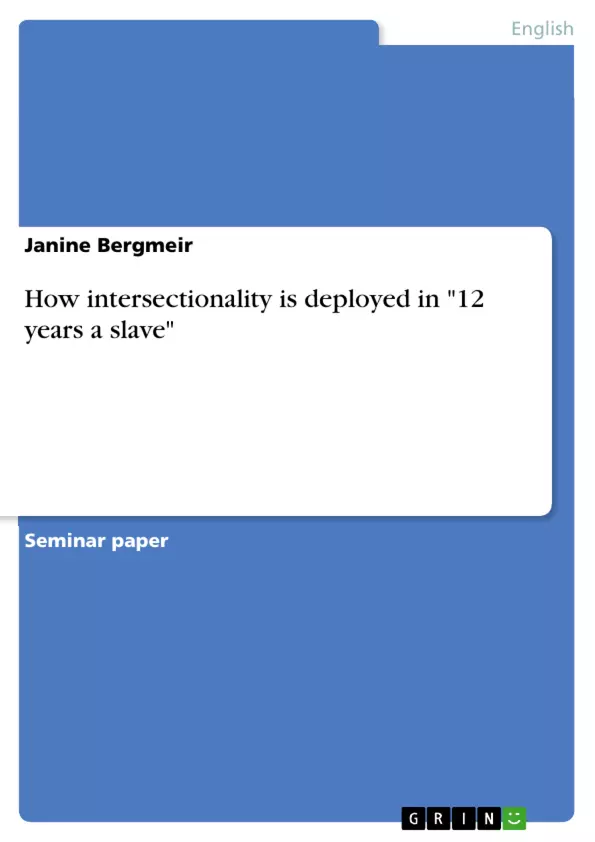Slavery pertains to the woeful history of America as a calculated and colossal example of man’s inhumanity. It is a grievous monument, full of hatred and brutality, about which stories emerged early. The slave history of America has produced various narratives. In this paper I will analyse the novel “12 years a slave” and its film adaption with regard to the theory of intersectionality.
I will examine two different responses to the idea of representing the brutal behaviour of human beings bought, sold and used up like property in literature and film. In my analysis I will make use of Kimberlé Crenshaw’s theory of intersectionality and its constituents such as race, gender, ethnicity and class, which are defining dimensions of inequality in this context. The primary aim is to examine how various axes of the term construct one another and how inequalities are articulated and connected with differences between human beings. This will be done by illustrating the multidimensional character of the various axis of the intersectional perspective.
Inhaltsverzeichnis (Table of Contents)
- Introduction
- Intersectionality
- Constituent Parts of Intersectionality
- A Definition - Intersectional-ity
- Historical Background of Intersectionality
- Class, Race, Ethnicity and Gender
- Constituent Parts of Intersectionality
- 12 years a slave
- Historical background of 12 years a slave
- The American Pre - Civil War
- 12 years a slave - The Narrative of Solomon Northup
- Deploying intersectionality
- Mistress Epps – the green-eyed monster
- Patsey - the helpless bondwoman
- From white to black; from men to women and back - Bringing it together
- 12 years a slave - The Film
- Film style
- Music and Sound
- Camera Work
- The whipping
- Editing
- Art Direction
- Historical background of 12 years a slave
Zielsetzung und Themenschwerpunkte (Objectives and Key Themes)
This academic work examines two different responses to the issue of representing the brutal world of human beings bought, sold and used up like property in literature and film. The main objective is to analyze the novel "12 Years a Slave" and its film adaptation in terms of Kimberlé Crenshaw's theory of intersectionality. This analysis will highlight how various axes of the term construct one another and how inequalities are articulated and connected with differences between human beings. The work will illustrate the multidimensional character of the various axis of the intersectional perspective.Key themes include:
- Intersectionality as a theoretical framework for understanding oppression and inequality
- The role of race, gender, ethnicity, and class in shaping the experience of slavery
- The representation of slavery in literature and film
- The use of cinematic techniques to convey the emotional impact of slavery
- The historical context of slavery in the American Pre-Civil War period
Zusammenfassung der Kapitel (Chapter Summaries)
The first chapter introduces the concept of intersectionality, tracing its historical development and providing a definition of its components. The second chapter focuses on the historical background of "12 Years a Slave", exploring the American Pre-Civil War period and the history of slavery. The third chapter analyzes the implementation of intersectionality in the narrative of "12 Years a Slave", focusing on the characters of Patsey and Mary Epps and how their treatment reflects the intersectional dynamics of slavery in the 19th century.Schlüsselwörter (Keywords)
The key words and focus topics of this paper include intersectionality, slavery, race, gender, ethnicity, class, literature, film, "12 Years a Slave", Solomon Northup, Kimberlé Crenshaw, and the American Pre-Civil War period. This work explores the complex interplay of these concepts in the context of representing the experience of slavery.- Citation du texte
- Janine Bergmeir (Auteur), 2016, How intersectionality is deployed in "12 years a slave", Munich, GRIN Verlag, https://www.grin.com/document/453346



